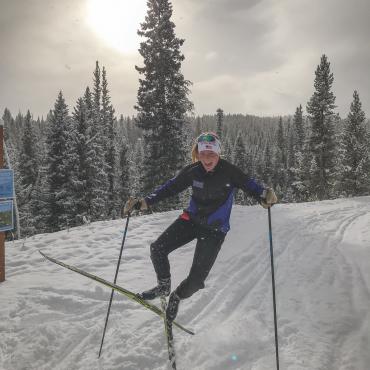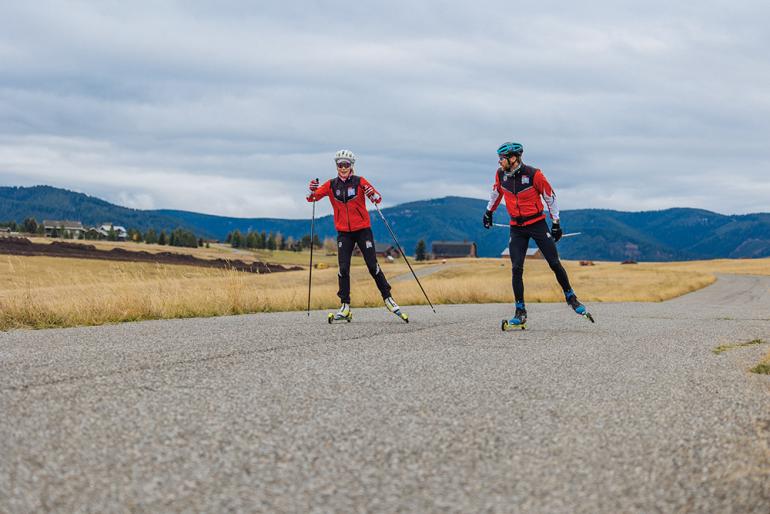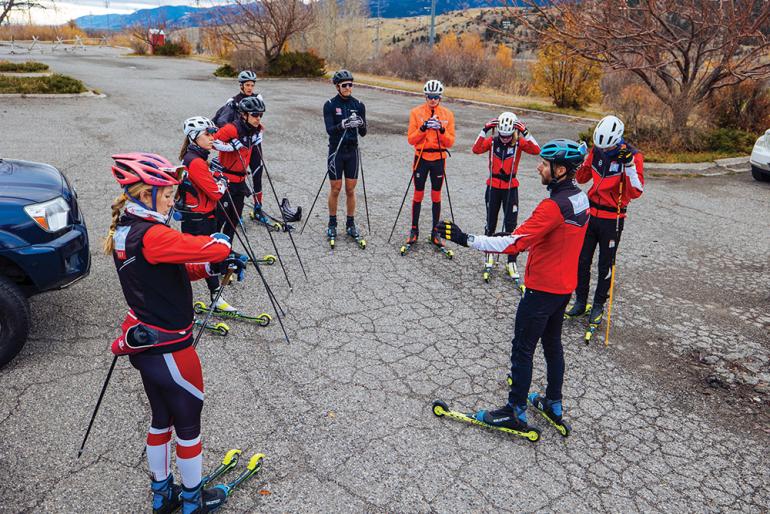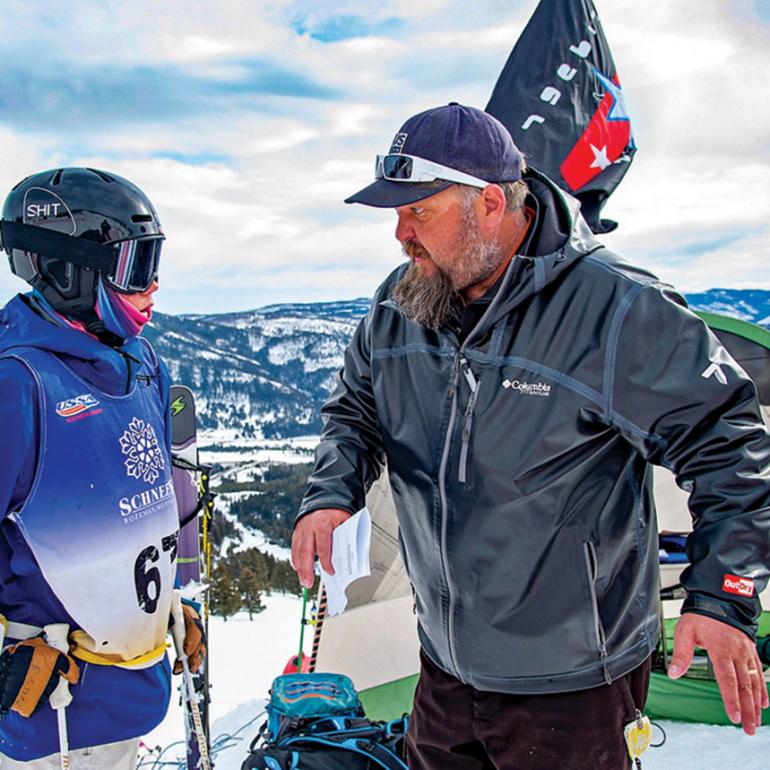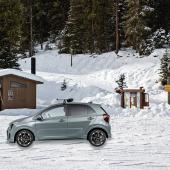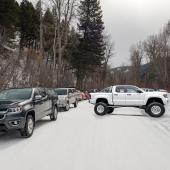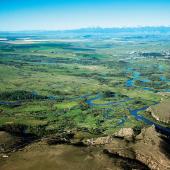From Start to Finish
Hometown Heroes, part two.
You may not know it, but the Bridger Ski Foundation traces its roots back to the 1930s, when a group of locals wanted to bring ski racing to the youngsters of small-town Bozeman. Beginning at Karst Camp and Bear Canyon (two of Bozeman’s earliest ski hills), and followed by Bridger Bowl in the 1950s, volunteers built courses and helped run competitions. Next came the official designation of the Bridger Ski Club. Sponsored by the Montana High School Association, kids could race locally, or travel to compete in northern-division races. When this sponsorship ended in 1971, it was up to ski clubs to come up with coaches, race fees, and travel costs. And so in 1975, the Bridger Ski Education Foundation was officially chartered as a nonprofit organization for alpine skiing, which then became the Bridger Ski Foundation in 1991 after merging with various clubs for freestyle and Nordic skiing. This consolidation helped streamline fundraising, get more people out on skis, and teach kids to be independent when they traveled with the team.
Nowadays, BSF has extended its reach even farther. Permanent, paid employees help keep things going and ensure that the mission continues—a change that has occurred only in the last decade. Jenny White, the marketing and communications director, attests to the growth this has allowed for. White says that the number of people enrolled in their programs in the last seven years has increased dramatically, including more than doubling this past year. With this larger size, exciting new opportunities have opened up. For Nordic and Alpine, they have programs for all ages, from kindergarten to masters and everything in between, including highly-competitive collegiate- and pro-level teams. On the freestyle side, there are options for kids in grade school all the way up to the full-time competition level. They even branched out to include a freestyle snowboarding team. But coaching ski teams is just a fraction of what they have going on. They hold events year-round like the Ski Swap, Oktoberfest celebration, Hyalite Tour, and community wax nights. They host the Bozeman stop on the Banff Mountain Film Festival tour every winter. And many folks also participate in their community competitions such as the Jim Bridger Trail Run in June and the FUNSKI Nordic Races in the winter. As participation continues to grow, a primary focus for BSF is implementing new ways for people to get involved.
Mike Papke, the freestyle program director, has worked with BSF in some capacity for 34 years. He says that despite all the growth they’re having at the competition level, BSF still meets kids where they’re at, and if so desired, offers a path to the next level. Papke has coached professionals like Heather McPhie from the time she put her boots on backward, all the way to the Olympics. And she’s only one of three Olympians (so far). BSF allows for an open arena where kids can just get outside and have fun, or push themselves all the way to the big leagues. A select few with this desire compete on the pro team, coached by Andy Newell. After 16 years racing competitively on the US Ski Team, Newell now coaches full-time. He works with high-level athletes and stresses that a big part of their success is a supportive team and community, both of which BSF strives to foster. “I chose to coach for BSF because they were an established club, not starting from scratch, and their roots run deep,” he says. “As an incoming pro-team coach, I saw huge potential in the motivated families and parents, as well as the limitless resources of the winter season.”
As participation continues to grow, a primary focus for BSF is implementing new ways to get involved.
Unlike many other places, Bozeman-area kids not only have an optimum physical environment, but ample support, from the entry levels all the way through high school, collegiate, and post-collegiate professional racing. Newell chocks this up to BSF’s wide and accepting reach. “A big part of this community can be attributed to how BSF welcomes new families and winter sports enthusiasts every year,” he says. According to Newell, whether it be trying out a program for the first time or participating in an event for the tenth year in a row, BSF feels like a family.
Even with all their exciting prospects of high-level skiing, BSF’s main goals remain centered on the Bozeman crowd, age and ability level aside. Local trails, such as Sourdough and Sunset Hills, are groomed and free to use so that anyone who is interested in learning has a chance. (An optional season pass costs $50 and helps defray BSF expenses, which amount to $70,000 annually.) BSF is doing their best to break down the sport’s cost barriers as well. The organization’s annual ski swap helps provide affordable equipment both for experienced skiers and for those who are just getting their feet wet. And with their increasing fundraising, BSF provides scholarships to make competition more accessible.
Despite growth and new programming, BSF remains fundamentally the same as its predecessor groups decades ago. It’s kept a homegrown, grassroots, small-town feel for the purpose of making winter activities available to everyone, which is reason enough to buy the optional pass or volunteer at a community event. As board member and volunteer Melodee Kelly put it, “Skiing is a lifelong sport, one you can take up no matter your skill level.” So get out to the ski swap, enjoy the 70-plus kilometers of groomed trail, and thank BSF for making it all possible. Through their work, our community has been granted easy access to get outside and enjoy the snow.
For more Hometown Heroes, read part one and part three.

